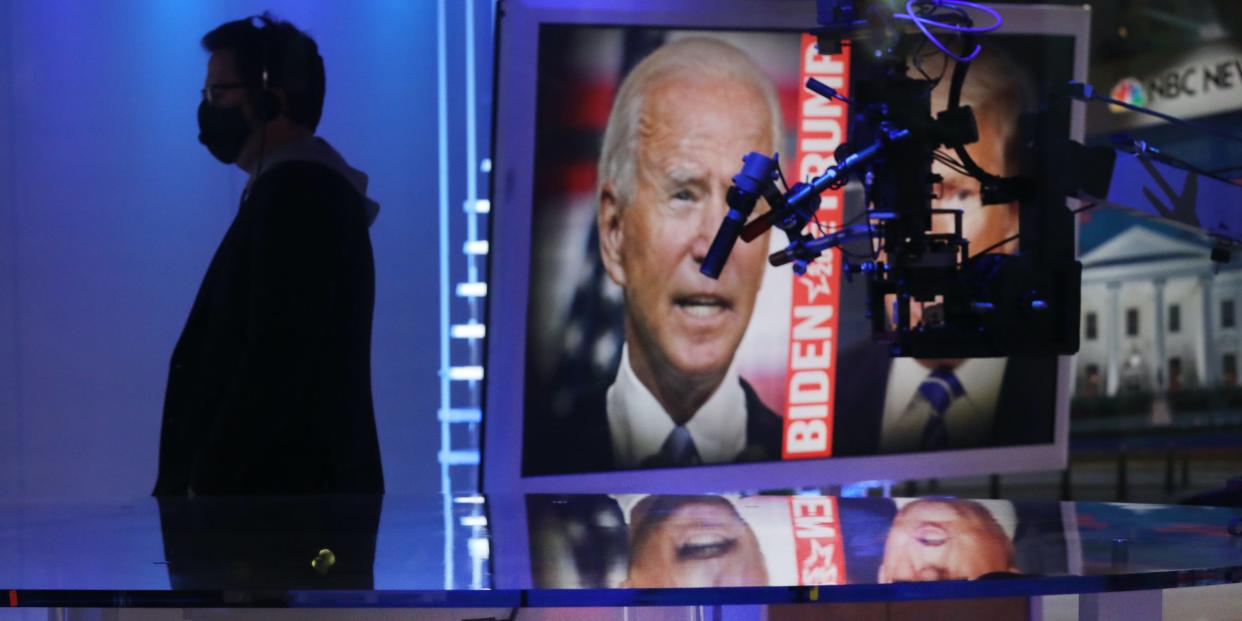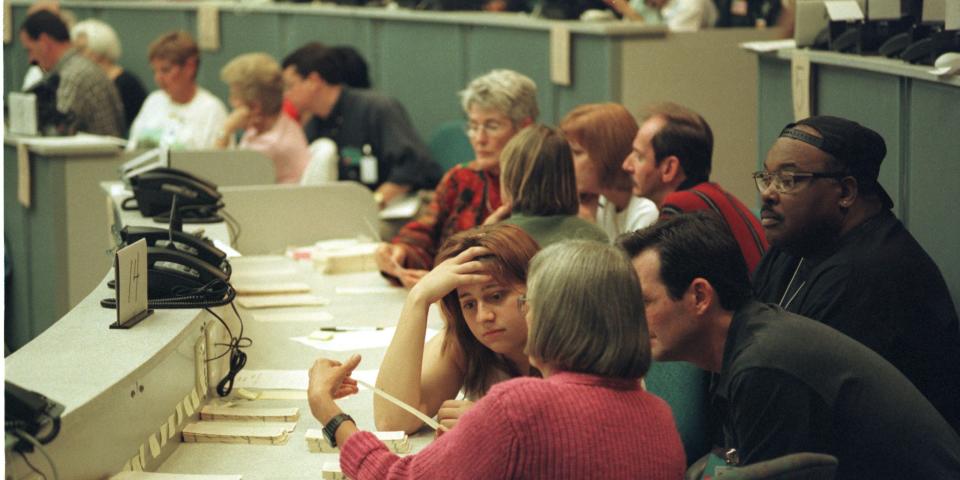Election week, Trump, and the chaos of 2020 prove that cable news feels more outdated than ever

The stress of US election week didn't have to be as bad as it was.
Despite warnings from network hosts, the hour-by-hour model of cable news and its attention-grabbing alerts were poorly suited for the procedural quirks of the 2020 election.
While the 2000 election dragged on for longer and its margin was much closer, the relentless attention economy of 2020 made this election seem similarly agonizing.
Unlike the music industry, cable has not structurally shifted nearly as much in the digital and streaming era.
With President Donald Trump refusing to concede the election, these issues are becoming only more pronounced.
Watching the returns come in during US election week thoroughly stressed out a huge number of Americans.
Things haven't been much better since then, with President Donald Trump refusing to concede the election and waging factually meritless legal challenges along with a disinformation campaign that could further undermine faith in the democratic process.
Stories like "how to avoid election stress" or "7 tips to cope with stress before and after the election" have become widespread. Many news outlets, including Insider, made efforts to prepare the public for the likelihood of not knowing a winner on election night. Yet for many Americans, the hypothetical proposition of an election week instead of election night hit much harder once we were stuck living in it.
The very format of cable news — tracking incremental vote returns 24/7 — made the increasing stress an inevitable outcome for those tuning in.
Close monitoring of Fox News, CNN, and MSNBC in recent days reveals differences in coverage choices between the three networks that have largely been overridden by one common trait.
The need to fill every hour with new content — or, rather, simulating the feeling of newness even without any major developments — is at the crux of cable news' problem coming out of the 2020 election.
If watching election week on TV taught us anything, it's that cable news feels more outdated than ever before.
This restless nightmare was 20 years in the making

The 2000 election's five-week limbo period, culminating in the Supreme Court's Bush v. Gore decision, was clearly a much more strung-out event.
Cable news was still in its relative infancy back then, however, and both smartphones and social media didn't exist.
Our attention economy in 2020 is almost incomparable to that of 2000.
During those 20 years, cable news became more sophisticated, but its business model largely remained the same.
As the 24-hour news cycle became part of American life, the competition for ratings and ad revenue through hourly programming remained intact even as the digital landscape evolved dramatically.
While music labels have substantially pivoted in their business models over the course of these two decades, cable has yet to undergo such a shift even as networks have launched their own streaming services. Offerings like Fox Nation and NBC News Now have a broad array of talent at their disposal, but they remain firmly in second-fiddle territory when it comes to where lawmakers and political figures go for interviews and what they prioritize strategically.
Big boards and lead changes did not work the same way in 2020

The main cable networks did not cover election week in a monolithic way from an editorial-judgment standpoint, and anchors across Fox News, CNN, and MSNBC repeatedly warned their viewers they might be in for the long haul.
But all three featured the same mainstays from their election coverage in recent cycles, particularly chyrons — the main text banners on-screen — with the vote totals and a percentage of the vote reported (an "estimated" amount this year thanks to the surge in mail-in voting) as well as the so-called big board, an interactive touchscreen display with results and maps.
Two skippers at the helm of their respective big boards — John King of CNN and Steve Kornacki of MSNBC and NBC News — became borderline folk heroes and certified memes throughout the week.
Both Kornacki and King provided clarity and caution in their performances at the board, earning widespread praise to accompany being immortalized in internet humor.
—Cat Mama (@_chloepaige) November 6, 2020
—The New York Times (@nytimes) November 6, 2020
—Late Night with Seth Meyers (@LateNightSeth) November 5, 2020
But what made big boards and vote tickers helpful in past elections only added to the stress and anxiety of this one.
Right away on election night, CNN's Wolf Blitzer kept cutting off King to point out incremental changes in leads, even though the vast majority of precincts had yet to report their results. His interruptions were essentially meaningless with such a long night and week ahead.
The specific ordering of how the mail-in votes arrived through the night and week led to the predictable, well-documented problem of the "red mirage," which showed Trump to be ahead only for more populated counties to push Joe Biden over the top with their mail-in votes later on.
Despite these networks having deep benches of reporters and correspondents with specific areas of expertise, lots of time was dedicate to panels of political strategists and other pundits who were not as well versed in the procedural peculiarities of this election.
Fox News in particular struggled with Trump surrogates spreading false claims about voter fraud, an issue that lingered on the network even as hosts like Bret Baier and Sandra Smith remained diligent in reminding viewers when the claims had no evidence behind them.
Versions of this short-term framing coupled with the threat of disinformation continued through the week, culminating in the major networks waiting until Saturday morning to call the race for Biden.
Read more: Why Decision Desk HQ and Insider called the election for Joe Biden
Now that we're in a different kind of limbo as Trump refuses to concede despite world leaders already moving on and congratulating Biden as the winner, Americans are once again tuning in and experiencing the same kinds of anxiety-provoking issues.
The likes of Kornacki and King aren't the problem here, nor are the tweaks networks made to the way they planned on the likelihood of a drawn-out process.
The fundamental flaw is the 24/7 news cycle, from the flashy chyrons to the breaking news and "key race alert" jingles — ironically sponsored on CNN by the meditation app Calm.
With all of the networks looking at how to stay viable beyond their aging audiences, all of the incentives are in place for a structural shift.
But it hasn't happened, and, until it does, tuning in for election coverage will have to come at the price of overeager anchors and panelists, abrasive musical cues, and bright maps of red and blue being seared into our psyches.
Read the original article on Business Insider

